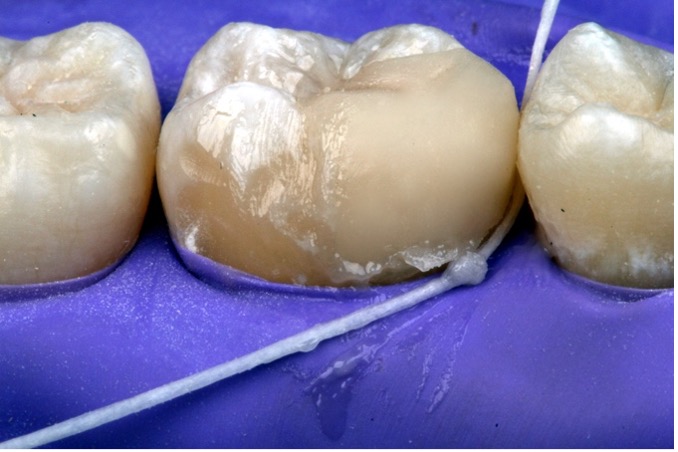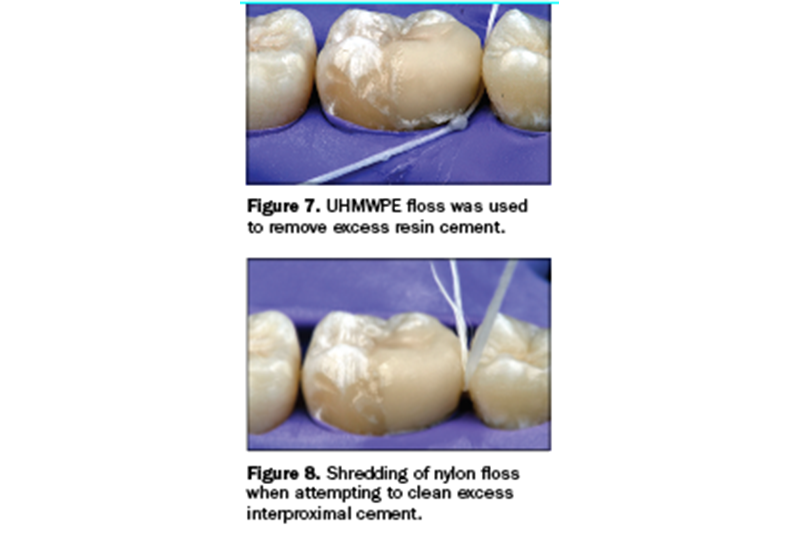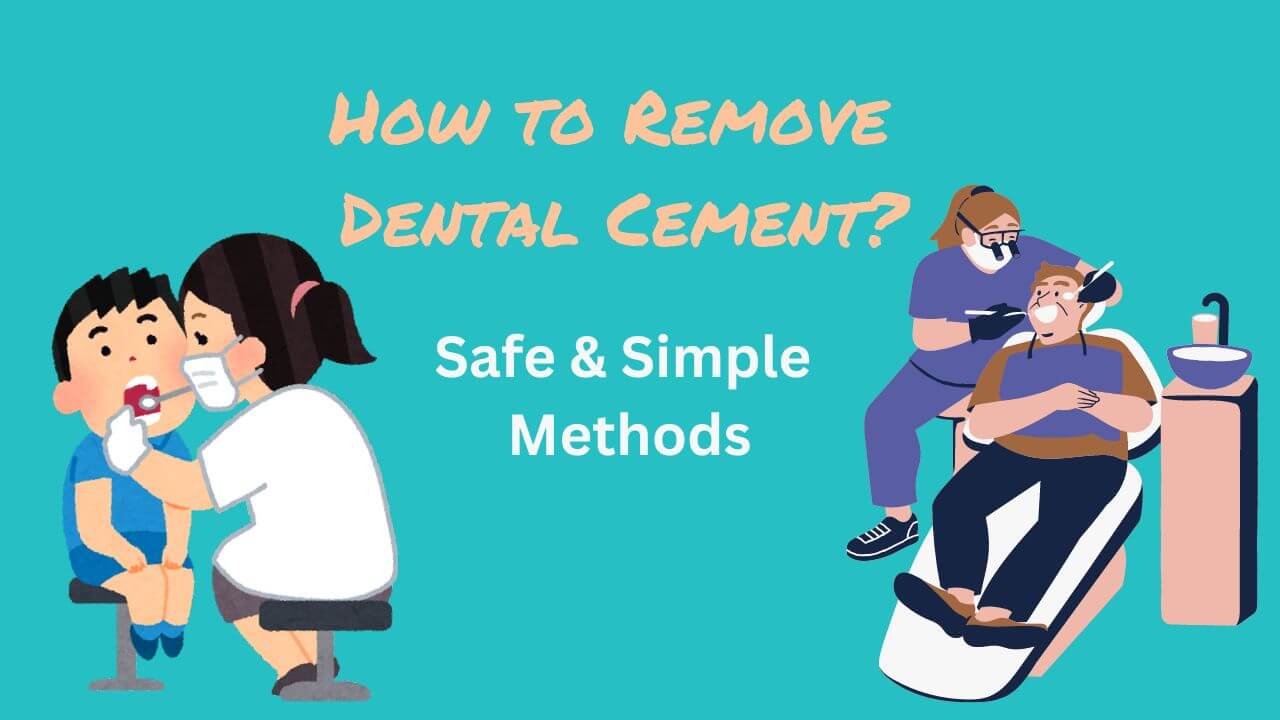How to Remove Dental Cement: To remove dental cement, visit a dentist using specialized tools for safe and effective removal. DIY removal can damage teeth.
Dental cement removal is best left to professionals to avoid complications. However, if you’re curious about the process or experiencing issues, it’s helpful to understand the basics. This guide will explain how dental cement is removed, the risks of DIY removal, and when to seek professional help.
By the end, you’ll have a clearer understanding of dental cement removal and the importance of professional care.
Introduction To Dental Cement Removal
Learn how to effectively remove dental cement with simple techniques for a painless and efficient process. Understanding the steps involved in dental cement removal can help maintain oral health and prevent complications. Proper removal ensures the longevity of dental restorations and overall oral hygiene.
The Role Of Dental Cement
Dental cement is crucial in dentistry, as it is used to secure various dental restorations such as crowns, bridges, and implants. This specialized adhesive material provides stability and support to these structures, ensuring they remain firmly within the mouth.
Why Removal Is Necessary
Despite its essential function, there are instances when the removal of dental cement becomes necessary. This may occur when a restoration needs to be replaced, repaired, or adjusted. Additionally, excess cement can cause soft tissue irritation, making its removal crucial for maintaining oral health and comfort.
Preparation Steps Before Removal
Prepare before removing dental cement by gathering tools like dental floss, a mirror, and a dental pick. Protect surrounding teeth with a dental dam or petroleum jelly. Cleanse the area thoroughly to avoid complications during the removal process.
Gathering The Right Tools
Before removing dental cement, you must ensure you have the necessary tools. Gather the following items to remove dental cement effectively:
- Dental scaler or pick
- Dental floss or dental tape
- Disposable gloves
- Cotton swabs or gauze
- Oral irrigator or syringe
Setting Up A Clean Workspace
Creating a clean and organized workspace is essential for successful dental cement removal. Follow these steps to set up your workspace:
- Ensure the area is well-lit and ventilated
- Use a clean, flat surface to work on
- Place all the gathered tools within easy reach
- Prepare a disposal container for used materials
Identifying Types Of Dental Cement
To remove dental cement, it is essential to identify the type used. Dental cements vary, including glass ionomer and resin-based varieties, each requiring specific removal techniques. Understanding the type of cement used is crucial for safe and effective removal.
Temporary Vs. Permanent Cement
Dental cement comes in two primary varieties: temporary and permanent. As the name suggests, temporary cement is used for short-term dental procedures such as crown or bridge placement. On the other hand, permanent cement is used for long-term restorations that require a stronger bond.
Material Composition And Properties
Temporary cement is typically made of zinc oxide and eugenol, which provides a weaker bond and allows for easy removal. On the other hand, permanent cement is made of a resin or glass ionomer material that creates a strong bond and can withstand the wear and tear of everyday use.
It’s important to note that each type of dental cement has unique properties and should be used for its intended purpose. For example, using temporary cement for a permanent restoration can lead to the restoration becoming loose or falling out.
By identifying the type of dental cement used in your restoration, you can take the necessary steps to safely and effectively remove it.

Credit: www.wisconsindentalwellness.com
Safety Precautions And Considerations
When removing dental cement, it is crucial to follow safety precautions and considerations to protect oral tissues and avoid inhalation and ingestion of harmful substances. By implementing these measures, you can ensure a safe and effective removal process.
Protecting Oral Tissues
During the removal of dental cement, it is essential to safeguard the surrounding oral tissues from potential damage. This can be achieved by utilizing protective barriers such as dental dams to shield the gums and soft tissues from direct contact with the cement removal agents.
Avoiding Inhalation And Ingestion
To prevent inhalation or ingestion of dental cement particles and removal agents, it is imperative to use proper respiratory protection such as masks or respirators. Additionally, ensuring adequate ventilation in the workspace can minimize the risk of inhaling potentially harmful fumes or particles.
Manual Removal Techniques
Manual removal techniques are an effective way to remove dental cement at home. These methods can gently and safely remove excess cement, providing relief and comfort. Let’s explore some manual removal techniques that can be utilized for this purpose.
Using Dental Picks
Dental picks are small, hand-held tools that can carefully scrape away excess dental cement. When using dental picks, it’s essential to work gently and avoid applying too much pressure to prevent damage to the teeth or gums.
Flossing Techniques For Cement Removal
Flossing can also be an effective method for removing dental cement. Individuals can dislodge and remove any residual cement by gently maneuvering the floss between the teeth. It’s essential to be patient and gentle while flossing to avoid causing any discomfort or irritation.
Chemical Methods For Dissolving Cement
Dental cement removal involves chemical methods, such as dental adhesive remover or eugenol-based solutions. These agents dissolve the cement gently without harming the teeth, facilitating the safe removal of dental crowns or braces.
Chemical Methods for Dissolving Cement
Removing dental cement can be challenging, but chemical methods are one of the most effective ways to dissolve it. Using appropriate solvents for dental cement can help break down the cement’s adhesive properties, making it easier to remove. However, it’s essential to understand the application and waiting times to ensure the solvents work effectively. This section will discuss the appropriate solvents for dental cement, application methods, and waiting times.
H3: Appropriate Solvents for Dental Cement
Various solvents available in the market can dissolve dental cement effectively. The most common solvents include eucalyptus, orange, and chloroform. These solvents work by breaking down the adhesive properties of the cement, making it easier to remove.
Eucalyptus oil is a natural solvent that can be used to dissolve dental cement. It’s essential to note that the purity of the oil should be at least 80% to ensure effectiveness. Orange oil is another natural solvent that can be used to dissolve dental cement. It’s crucial to use the purest form of orange oil to avoid any adverse effects on the patient. Chloroform is a chemical solvent that can dissolve dental cement. However, it’s vital to use it with caution and under professional supervision.
H3: Application and Waiting Times
The application and waiting times for solvents depend on the type of solvent used. Eucalyptus and orange oils should be applied to the cement for at least 10-15 minutes. It’s crucial to ensure that the solvent remains in contact with the cement during this time to provide complete dissolution. On the other hand, chloroform should be applied for only a few seconds as it evaporates quickly.
After applying the solvent, removing the cement with a dental scaler or a similar instrument is essential. It’s crucial to avoid excessive force while removing the cement to avoid damaging the tooth or surrounding tissue.
In conclusion, chemical methods for dissolving dental cement can be an effective way to remove the cement. However, using appropriate solvents and following the application and waiting times is essential to ensure effectiveness. It’s crucial to perform this procedure under professional supervision to avoid adverse patient effects.
Aftercare Following Cement Removal
Following the removal of dental cement, it’s essential to follow proper aftercare to ensure optimal healing. Rinse your mouth gently with salt water, avoid hard or sticky foods, and maintain good oral hygiene to promote recovery. Look for any unusual symptoms and contact your dentist if necessary.
Aftercare Following Cement Removal
Cleaning and Rinsing the Mouth
After removing dental cement, it’s crucial to maintain proper oral hygiene. Gently brush the teeth and gums to remove any residual cement completely. Use a soft-bristled toothbrush and mild toothpaste to avoid irritation. Rinse the mouth thoroughly with lukewarm water to eliminate any lingering particles.
Monitoring for Residual Material
Keep an eye out for any signs of residual cement in the mouth. Check for rough spots or sharp edges with your tongue. If you notice any, contact your dentist immediately for further evaluation. Be vigilant for any discomfort or irritation in the treated area, and report any concerns promptly.
Remember, proper aftercare is essential for a swift and smooth recovery after dental cement removal.
Professional Assistance And When To Seek It
Limitations Of Home Methods
While home methods can be effective for removing small amounts of dental cement, they may not be suitable for more extensive or stubborn bonding. Attempting to remove large or stubborn pieces of dental cement at home can damage the teeth or surrounding tissues. It is essential to be aware of home methods’ limitations and seek professional assistance if necessary.
Signs You Need To Visit A Dentist
If you experience persistent pain or discomfort or notice any signs of infection, such as swelling or pus around the affected area, it is crucial to seek immediate dental attention. Additionally, if you cannot remove the dental cement at home using gentle methods or if the bonding is causing difficulty with your bite or speech, you should schedule an appointment with a dentist for professional removal.
Troubleshooting Common Issues
To remove dental cement, gently scrape it off using a dental pick or scaler. Be cautious not to damage the tooth’s surface. Rinse thoroughly with water after removing the cement to remove all residue.
Dealing With Stubborn Cement
If the dental cement proves challenging to remove, consider using a dental scaler or a polishing strip.
Take care to gently scrape away the cement to avoid damaging the surrounding teeth and gums.
Managing Sensitivity After Removal
After removing the dental cement, expect some sensitivity, which should subside within a few days.
Rinse your mouth with warm salt water to help reduce any discomfort and promote healing.

Credit: www.oralhealthgroup.com
Maintaining Dental Health Post-procedure
After a dental procedure, it’s essential to maintain dental health by removing dental cement properly. Start by brushing gently around the cement with a soft-bristled toothbrush, then floss carefully to remove any remaining cement. Rinse your mouth with warm saltwater to soothe any discomfort and promote healing.
Regular Dental Check-ups
Preventive Practices To Avoid Future Cementation
Maintaining dental health post-procedure is crucial for long-term oral well-being. Regular dental check-ups are essential to monitor issues and ensure optimal dental health. These visits can help catch problems early on. Consider scheduling check-ups every six months. This practice aids in detecting and treating potential dental cement-related complications early. Preventive practices are crucial to avoiding future cementation needs. Proper oral hygiene, including brushing twice daily and flossing, can prevent decay and the need for dental cement. Incorporate fluoride into your routine to strengthen teeth and prevent cavities. Proper dental care post-procedure is fundamental for maintaining a healthy smile.

Credit: www.dentistrytoday.com
Frequently Asked Questions
How to Remove Dental Cement:
Does Anything Dissolve Dental Cement?
Acetic acid can dissolve dental cement. It is found in vinegar and can be used as a home remedy.
How Do You Dissolve Dental Glue?
To dissolve dental glue, use a dental adhesive remover or warm saltwater. Gently wiggle the bonded area to loosen the glue. Clean the area with a soft cloth. To avoid harm, stay away from utilizing force or sharp items. If the glue persists, consult your dentist for professional removal.
What Breaks Down Tooth Cement?
Acids in food and drink, such as citrus fruits and sodas, can break down tooth cement. Poor dental hygiene and certain medical conditions can also contribute to the breakdown of tooth cement.
Does Dental Cement Wear Off?
Dental cement can wear off over time due to chewing, grinding, and other factors. Regular dental check-ups can help monitor the condition of the cement and address any issues promptly.
Conclusion
Removing dental cement at home can be done with simple steps. By following proper techniques, you can safely eliminate excess cement. Remember to consult your dentist for guidance and maintain good oral hygiene for lasting results. Maintain dental health for a happy smile!

Hello there! I’m here to assist you with health tips and tricks. Whether you’re looking to boost your energy, improve your sleep, or enhance your overall well-being, I’m here to guide you with strategies and frameworks that can empower you to make positive changes.
First and foremost, it’s important to understand that health is a holistic concept encompassing various aspects of physical, mental, and emotional well-being.

